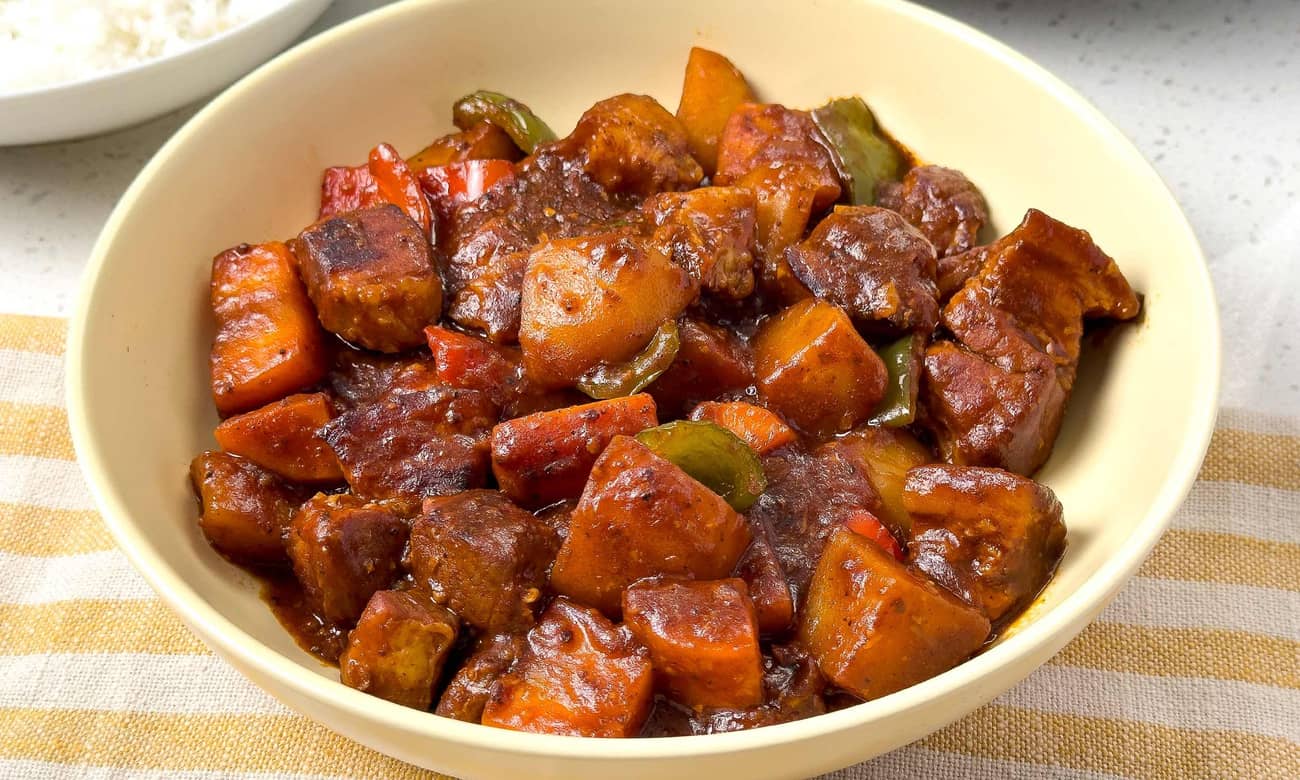
There is much to be said for fresh ingredients—its flavor is always crisp, unmarred by age. But getting these at their peak leaves you a very small window of opportunity, and once you get get your hands on some prime ingredients, the clock starts ticking. It’s only a matter of time before they go bad.
Thankfully, pickling fruits and vegetables can be easily done to prolong their shelf lives. The flavors of the ingredients change, but in a way that enhances and allows for other flavors to complement the fruits and vegetables you’re preserving.

Buro (or buru in Kapampangan) means "preserved". It commonly refers to foods pickled with salt or brine, then stored for long periods of time until properly fermented.
The process of making buro can be applied to different fruits and vegetables, though the nitty-gritty like fermentation time and preparation can vary per ingredient.
This recipe teaches you how to make three common buro: burong mangga, burong hipon (or balao-balao), and burong mustasa.
Burong mangga, or pickled mangoes, preserves the sweetness of mangoes and transforms its crispness to a more pliable texture without compromising all of its crunch. These sweet-sour pickles make a great side dish for inihaw and fried foods.
Burong hipon, also known as balao-balao, is made from fermented rice and shrimp. Its strong yeasty flavors takes some getting used to, but when coupled with spicy mustard leaves, the soft, mushy rice becomes more palatable for the uninitiated. If that makes you squeamish, you can pan-fry balao-balao before using.
Burong mustasa, or pickled mustard leaves, allows the spicy greens to take on other flavors. In this recipe, the siling labuyo gives it heat while black peppercorns provide an aroma that rounds out the mustard greens' saltiness.
The processes in preparing these three different types of buro vary. One depends on a brine while the two other recipes require more handiwork than expected—but nothing that can be difficult for someone who is learning the ins and outs of cooking.
There’s a lot of science that goes into fermentation, and for a novice it can be intimidating, especially when botulism is a risk. But your worries can be easily put to rest once you follow important bottling guidelines, and at the very top of that list is making sure the bottle is clean and heated in a hot water bath.
Serve buro as a condiment or dipping sauce for your meals. Like atchara, it works especially well in roasted, grilled, or fried foods.
Sterilize jar: Wash a 750ml glass jar and sterilize with boiling water.
Make brine: Combine water, sugar, and salt in a sauce pot. Bring to a boil to dissolve sugar and salt, then remove from heat to cool.
Prepare mangoes: While brine is cooling, peel and and seed mangoes. Slice fruit into 2cm-thick slivers and arrange into the clean and sterilized jar.
Pour brine: Pour cooled brine over mango slices, making sure they are completely submerged. Seal jar and leave at room temperature overnight to start fermentation. Store in fridge and let ferment for 3 days before using.
Sterilize jar: Wash a 750ml glass jar and sterilize with boiling water.
Cook rice: Steam rice according to packet instructions until cooked. Once cooked, spread rice out on a tray in a single even layer and let cool completely.
Prepare shrimp: While the rice cools, wash shrimp and pat dry. Place in a bowl and sprinkle with salt. Mix thoroughly with a clean metal spoon, then mash roughly to allow juices to flow.
Combine rice and shrimp: Using disposable gloves (to avoid bacterial or fungal contamination), add the rice in the shrimp bowl and mix until rice is coated with the shrimp. Pack rice in the sterilized jar a little at a time, ensuring there are no air pockets in between.
Sterilize jar and weights: Wash a 750ml glass jar and baking weights or marbles. Sterilize both with boiling water.
Make brine: Combine water, one tablespoon salt, and black peppercorns in a pot. Bring to a boil over high heat, then remove from heat and allow to cool completely.
Prepare mustard greens: Discard any yellow or wilted leaves. Chop greens into 2-inch pieces. Transfer to a bowl and sprinkle with leftover rock salt. Leave for 30 minutes, until mustard greens have changed color and released a lot of liquid.
Pack into jar: While wearing disposable food-grade gloves, squeeze out excess water from the mustard greens. Transfer squeezed greens in a bowl and mix with the chili. Pack into the clean and sterilized jar in batches, adding some cooled brine with each addition, making sure that the greens are fully submerged and there are no air pockets in between.
In a pan with warm oil, stir-fry buro with some onions, garlic and ginger until rice is cooked through.
We recommend using half an onion, 1 small tomato and 2 teaspoons of ginger for every cup of buro. Of course, you can season to taste from here.

Seal and ferment: Cover the top of the jar with cling wrap, making sure the plastic makes contact with the surface of the rice. This ensures that no aerobic bacteria or fungal spores are allowed to grow. Seal jar tightly with a lid and store in a cool dark place for 3 days. Transfer to the fridge and let ferment for another 2 days before using.
Ferment: Place plastic wrap over the lid of the jar, making sure the plastic is in contact with the surface of the brined greens. Weigh down the plastic with baking weights or marbles to keep the plastic pressed onto the pickles. Seal and store at room temperature for 3–4 days. Check daily to ensure all leaves are submerged. When desired level of fermentation is achieved, transfer jars to the fridge.